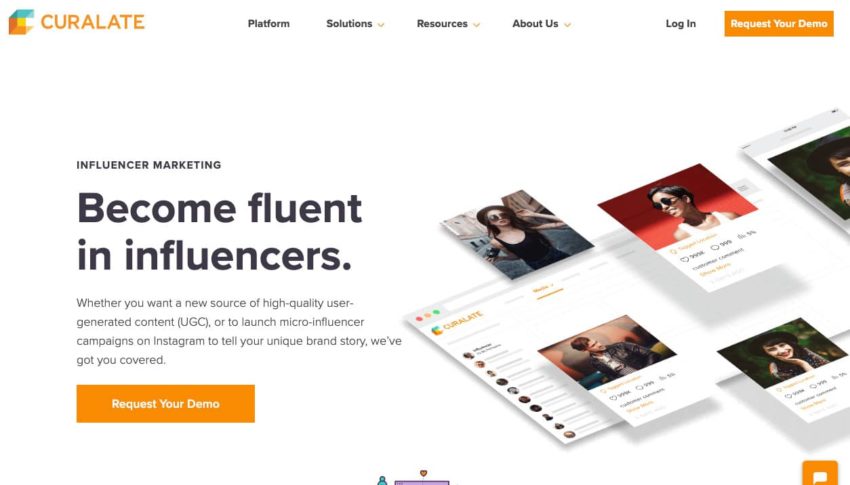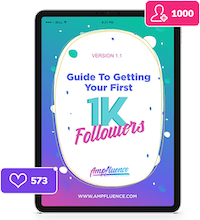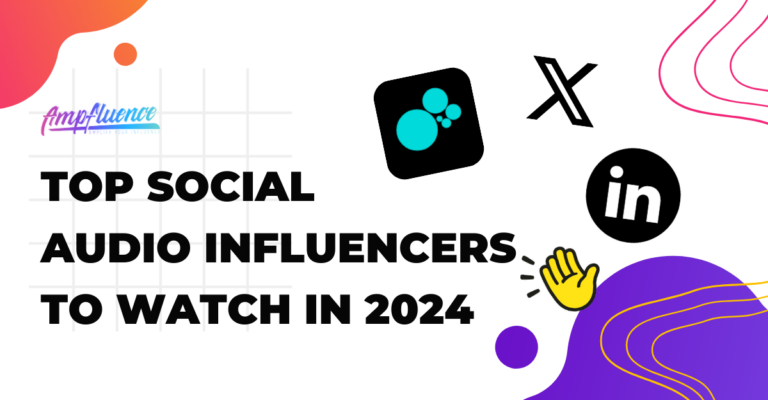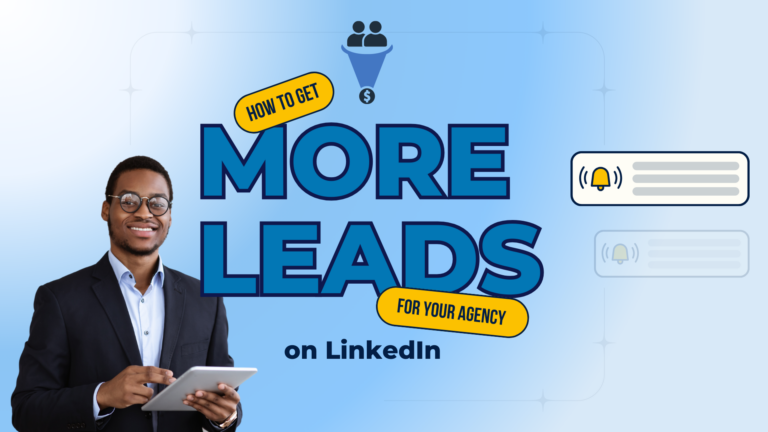You probably know you need user-generated content (UGC)—and lots of it. The problem isn’t often with understanding the benefits of UGC, but finding the most efficient ways to source it. That’s when UGC Platforms come to the rescue. In this article, we will list out the top UGC articles and explain their pros and cons.
What is User-Generated Content (UGC)?
Is UGC news to you? No worries! Brands are just starting to realize the value of user-generated content. With UGC, you rely on your shoppers to create content for you. UGC is any piece of content that isn’t made by your company.
UGC might come in the form of:
- Written reviews or text
- Unboxing videos
- Reviews
- Product photos
While you’re free to keep cranking out branded content, UGC does a lot of things that your branded content just can’t accomplish.
Basically, UGC is the digital version of word-of-mouth marketing.
Since 92% of shoppers believe suggestions from people in their network over advertising, every eCommerce brand needs UGC.
That’s because UGC is less in-your-face than paid ads. It looks like a normal part of someone’s feed, which means shoppers are much more likely to pay attention to someone’s unboxing video of your product instead of a video from your biz about the product.
The Benefits of UGC Platforms
If you’re thinking, “Who cares about users’ content? I’m making my own!”, you probably don’t realize the power of UGC just yet.
But think about this: you’re marketing a product in a post-COVID world. Nobody’s brain is working the same way as last year, and that means you have to switch up your marketing to be relevant.
When you take the plunge on UGC, your business will reap the benefits. It’s relatable.
If customers can’t visualize themselves using your product, you’re toast. UGC is so important because the content is relatable: after all, it’s coming from fellow consumers.
Yes, there’s a time and a place for your more polished, traditional content, but it’s not always the best option.
In fact, in the wake of the pandemic, some branded content can look tone-deaf and unrelatable.
You’ve got to create trust with your shoppers. 93% of marketers agree that consumers trust their fellow consumers more than they trust you.
The most efficient way to build trust is to feature other users’ content on your website, social media, emails, and more.
1. UGC Builds Relationships
Customers want to “know” the brands they’re buying from, but on the marketing side, it’s hard getting to know followers on an individual basis.
The problem is that it’s really, really hard managing these relationships with customers at scale.
UGC makes it possible to build strong connections with your consumers—even if you have thousands of buyers. When you share authentic, relatable content, it makes you stand out.
People appreciate brands that keep it real; in fact, 90% of shoppers say authenticity is a factor when they’re deciding where to shop.
2. UGC Gets Results
Sure, authenticity and relationship-building are super important. But we know you need hard data you can take to your boss that proves UGC is worth the investment.
Fortunately, UGC has a significant effect on your bottom line. Check the stats:
- UGC boosts conversions by 10%
- Campaigns with UGC have 29% higher conversion rates than campaigns without UGC.
- Ads with UGC get 4x clicks for 50% less ad spend.
UGC clearly has a lot of benefits for your business. If you haven’t used it yet and aren’t sure where to start, we recommend starting with a UGC platform.
Why Do I Need a UGC Platform?
If you want to do UGC right, we recommend using a platform to manage and collect everything.
But hey, we get it: adding a platform to your marketing stack is a big decision. So why do eCommerce brands need a UGC platform, anyway?
It comes down to this:
DIY Sourcing Takes Forever
Do you really have the time to painstakingly dig through Instagram, review sites, and email responses? A DIY approach means you have to manually use that UGC when you do find it. It’s a time-wasting nightmare.
UGC Platforms Make your Life Easier
The structure of a UGC platform saves you more time. It automatically looks for UGC and ports it over in a format that works for your team. Some platforms will even allow you to reshare the UGC directly from your dashboard. Easy, right?
Platforms Have Existing Relationships
Psst, did you know that you can TAP INFLUENCERS TO DO UGC FOR YOU? A good UGC platform will pair you up with experienced content creators and influencers to make your UGC go even further.
You’re free to do the DIY option, but we’re willing to bet that it isn’t sustainable for your team. When it’s time to do UGC for real, turn to a trusted platform to save time and market at scale.
Top 7 UGC Platforms
We can’t promise that we’ve turned over every stone in the fast-proliferating market, but we’re confident the platforms we have uncovered based on my experience and research can help you become a more efficient and effective purveyor of UGC. Here are seven of the top UGC platforms you might want to try or buy.
1. Ampfluence
Ampfluence works with brands and businesses across a wide range of industries. If creators are interested in launching a career as influencers, joining our creator network helps them build a solid portfolio while getting paid to do what they love. More importantly, joining our network gives creators access to brand opportunities not available anywhere else online.
Following are the types of brand campaigns we offer:
- Household Names
- Marketing Agencies
- Lifestyle Brands
- Publications
- Amazon Sellers
- Saas and Startups
Ampfluence manages 1000s of brand campaigns every year. Our clients are looking for video creators who create unique content across a wide range of industries including fashion, travel, food, business, tech, and more.
2. Vidovo
Vidovo, a relatively new platform, is revolutionizing the industry by enabling direct connections between brands and content creators. With Vidovo, you no longer need to scroll through hundreds of creators in search of the one who truly understands your brand. Their team does all the legwork, ensuring you connect with the ideal creator who connects best with your brand.
They’ve built a diverse network of content creators, inviting creators from various niches to apply and become part of their dynamic community. Brands collaborating with these creators can oversee every step of the process through the Vidovo dashboard, from assigning the creator to reviewing and approving the final creative.
Features:
- A dashboard for viewing and managing UGC all in one place
- Vidovo has a network of more than 1,000 creators. Their diverse community guarantees an impressive range of content, ensuring brands can find the perfect fit for their video creatives.
- Vidovo empowers brands with complete content rights for all creator-generated content.
Pricing: Vidovo starts at $129 per video.
3. ShortStack
The ideal way to inspire people to create UGC is to dangle a reward in front of them. Contests do just that. They deliver a reason to play along.
ShortStack is one of the pioneers in the business of enabling brands to create contests, giveaways, and other types of online competitions and promotions. Their flexible service enables you to jumpstart the creation of your promotions by customizing any one of a long list of templates.
ShortStack customers often choose to conduct photo and video contests, which are promoted on Instagram, Facebook, Twitter, YouTube, and more. Contests not only prompt fans and customers to publish content, but also take advantage of what ShortStack calls “action-gating,” meaning users must submit contact information via a form to qualify for the competitions.
4. Curalate
Curalate describes itself as a visual content platform and the leader in “discovery-driven commerce.”
The platform is a robust toolbox for increasing sales via social media. One compelling component of Curalate, Fanreel, enables e-commerce brands to “bring the outside in.” That is, brands can easily gather UGC, secure approval to use it, and present it on-site to help boost conversion.
5. TINT
TINT describes itself as a social media aggregator and content curation tool. The company introduces a couple of interesting slants:
In addition to the broad “enterprise” use case, TINT positions its services specifically in hospitality and education markets.
TINT also showcases how the service is ideal for creating social media walls at events.
6. CrowdRiff
CrowdRiff combines UGC discovery and content delivery. However, CrowdRiff takes a vertical market approach with services that cater specifically to travel and tourism brands.
#ThePalmBeaches campaign is an example of how CrowdRiff’s clients leverage user-generated content, word-of-mouth marketing, and the power of social media to feature compelling visuals.
CrowdRiff also touts “smart digital asset management for both UGC and owned visuals.” The platform’s AI elements include a feature that tracks the performance of photos and videos that clients choose to feature in galleries. The software then automatically features those that gain the most traction.
7. Olapic
Olapic’s a formidable player in the UGC space as well. Clients earn content with a content engine, request it from influencers and employees with a creator platform, and create it by turning assets into motion-based content.
We didn’t find any mention of “motion-based” on the websites of the other brands included in this post, so let’s look at that interesting feature.
Olapic’s Content in Motion feature transforms UGC images into engaging, short-form videos that can be shared across a variety of digital channels.
Conclusion
This was our take on finding the best UGC platforms that can help you step up your business game. We hope after reading this article you’ll be able to decide which platform will help you best.
















3 Responses
Hello,
Really cool article, as always 🙂
As for the various forms of UGC, I’d also add customer shares, likes and comments on networks.
They don’t have the same impact as video or photo posts, but they still help to spread the word about the brand to their network.
Also, I would add a 7th UGC platform called Wiink : https://www.wewiink.com
They’re less than 2 years old, but they’re already working with over 50 customers, including major e-commerce brands.
Florian
geometry dash lite is a fast-paced, action-packed game where players race to the getaway spot while trying to eliminate their opponents
Is UGC news to you https://bookmakers-cameroun.net/? No worries! Brands are just starting to realize the value of user-generated content. With UGC, you rely on your shoppers to create content for you. UGC is any piece of content that isn’t made by your company.